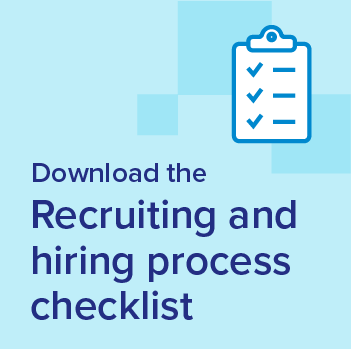Human resources management
Get tips on how to hire and retain the best possible staff for your practice
Running an effective office starts with staffing
Get all of the information that you need to know about managing staff.
Download the PDF guideHigh-performing employees are essential to the smooth day-to-day operation of your practice. They can help translate your medical vision into action, so you can maximize your focus on delivering quality care.
Finding and properly managing the right personnel does require time and money, but that investment can pay off with increased office efficiency and patient satisfaction.
The first step is to assess the office’s overall staffing needs. The size of your team may vary depending on your specialty, number of medical providers, patient volume and other factors.
 Hiring for these positions can become much easier if you follow a systematic process. Create detailed job descriptions, establish conditions of employment and have a procedure for interviewing and evaluating candidates.
Hiring for these positions can become much easier if you follow a systematic process. Create detailed job descriptions, establish conditions of employment and have a procedure for interviewing and evaluating candidates.
Once your staff is in place, motivation and management are top considerations. Set clear goals, engage in regular two-way communication and take time to reward success. Your staff will be more motivated and productive – and less likely to leave.
Unfortunately, there are times when things don’t work out. Terminating an employee is never easy, but sometimes necessary. Be fully informed about the law and your obligations.
Additional products and services available for members
OMA members get access to exclusive savings from our partners. Explore these relevant resources, products and services.